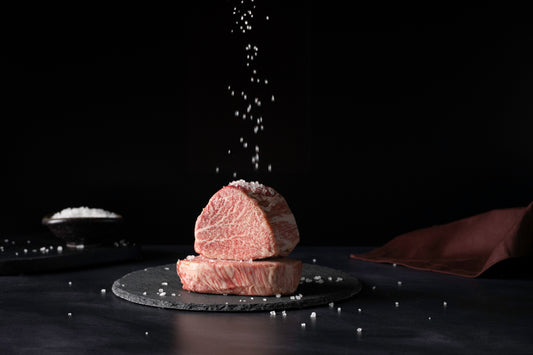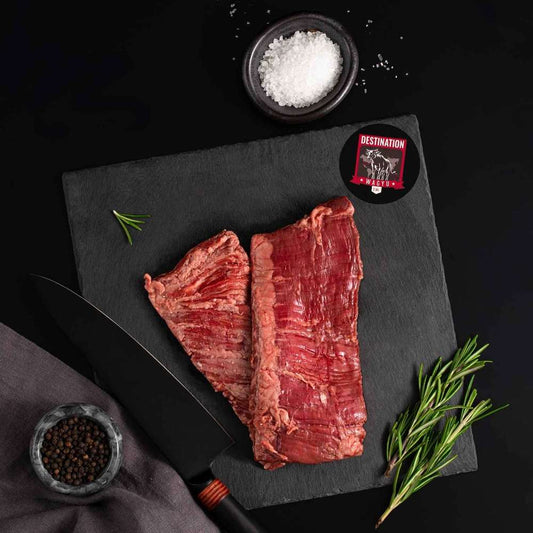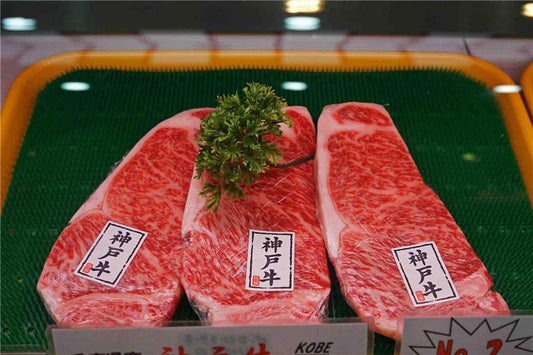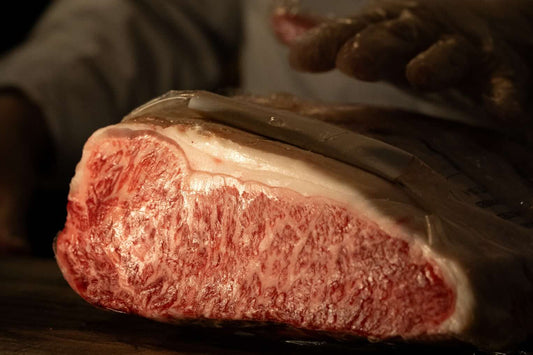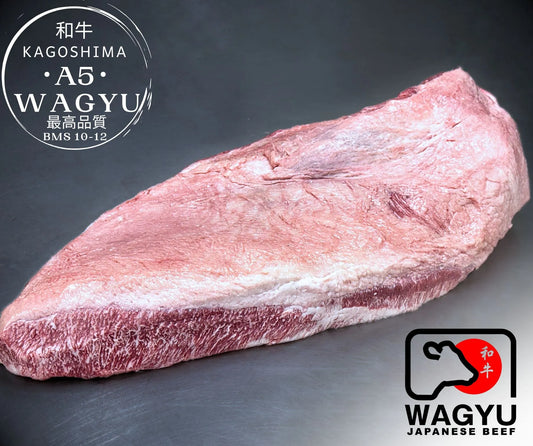When professionals talk about “cooking Wagyu,” the phrase is misleading in its simplicity. We’re not just talking about applying heat to beef. We’re talking about an ingredient whose physiology, flavor chemistry, and thermal response are all so unlike conventional meat that it calls for its own vocabulary. Cooking Wagyu Beef at home is more akin to precision metallurgy than to conventional searing. It requires calibration, restraint, and above all, deep respect for the intrinsic qualities of the animal.
I’ve worked with Wagyu in high-end restaurant kitchens, test labs, and at home. I can say without hesitation that the home setting presents both a unique challenge and a unique opportunity. You have total control. There’s no pressure for volume and no need to bend to diner expectations. But that control comes with responsibility. The margin for error is narrower, the fat renders faster, and the moment you impose your will rather than interpret what the beef wants to become, you lose what makes Wagyu special. This isn’t about technical flexing. It’s about precision restraint.
In this article, I’ll walk you through the full process of cooking Wagyu beef at home the way I would teach a sous chef or culinary R&D colleague. From sourcing and cut selection to pre-cooking thermodynamics, to service and plating. This isn’t beginner material. If you're serious about cooking Wagyu Beef, you need to understand how the fat behaves. We’re going to talk in terms of temperature curves, lipid composition, thermal conductivity, and muscle fiber orientation. But my goal is clarity, not complexity. If you're cooking Wagyu, you're already operating at a high level. I’m just here to help you squeeze every bit of potential out of every gram.

The Material: Wagyu as an Ingredient, Not a Buzzword
Before a blade ever touches the meat and before a flame licks the pan, your success depends on your understanding of the raw material. Wagyu isn’t a style. It’s a breed designation, but even that doesn’t fully explain the product. You need to know where it was raised, what it was fed, how it was butchered, and how it’s been handled since slaughter.
Breed and Lineage: Not All Wagyu Is Created Equal
The Wagyu most chefs reference is Japanese Black, or Kuroge Washu. Within that, the Tajima line is most commonly associated with high-grade A5 cuts. Why does that matter? Because Kuroge cattle have a unique propensity for ultra-fine intramuscular marbling that isn’t just more fat. It’s a different kind of fat, interspersed in micro-capillaries between muscle fibers. American and Australian Wagyu, while still impressive, often come from crossbred lines. Typically, these are Wagyu crossed with Angus or Holstein, resulting in a slightly coarser grain of marbling and a lower overall oleic acid content.
And here’s the kicker. That difference is not just visual. It changes how the fat melts, how it coats the palate, and how it behaves under thermal load. Japanese A5 Wagyu starts rendering below body temperature, around 22 to 25°C (72 to 77°F). That means the tactile experience of the fat is like velvet, not wax. That melt-in-your-mouth quality is real, and you lose it the moment you mishandle the fat.
Grading Systems: Beyond A5
A common misconception, even among professionals, is that A5 is the top grade in Japan. That’s only half true. The “A” refers to yield (A being the highest carcass yield), and the “5” is the quality score. But within that quality score lies the BMS, or Beef Marbling Standard, which ranges from 1 to 12. A5 BMS 8 is miles apart from A5 BMS 12. In a high-end kitchen, I’d treat those two steaks as entirely different ingredients. One might be pan-seared, the other reserved for sukiyaki or torch finishing.
When sourcing from Australia or the U.S., you’re working with different grading languages. Australia uses a marbling score system that tops out at 9+, though some producers like Mayura Station or Sher Wagyu use internal designations that go up to 12 to match the Japanese scale. In the U.S., “Wagyu” can mean anything from fullblood to a 25 percent cross, so you must demand breed certificates or full traceability if purity is important to your cook.
Preparing the Beef: Storage, Thawing, and Knife Work
Cooking Wagyu Beef starts long before it hits the pan. You’re dealing with a product where ambient room temperature can melt the fat. That means everything from thawing to slicing must be approached with the same precision you’d use when working with raw fish for sashimi.
Thawing Protocols for Structural Integrity
Forget what you know about defrosting conventional beef. Wagyu cannot be hurried. Cryo-frozen Wagyu should be brought up to temperature over at least 24 hours in a controlled refrigeration environment (2–4°C), followed by a 30 to 60-minute ambient rest depending on cut thickness. If you pull it straight into the pan cold, the muscle will seize and the fat won’t render evenly. Worse, you’ll shock the internal structure and lose all that delicate marbling into the pan as runoff instead of into your mouth as flavor.
I’ve found the optimal surface temperature for searing Wagyu is around 18°C (64°F). At this temperature, the fat begins softening but hasn’t yet destabilized. You get even rendering without splatter, and the muscle tissue is relaxed enough to accept heat evenly.
Knife Work: Precision Over Power
Your knife technique must be surgical. I use a 270 mm sujihiki for most portioning, sharpened to a fine edge on an 8000-grit stone. For thinner slices like yakiniku or sukiyaki, I switch to a yanagiba with a single bevel. The trick isn’t just to cut. It’s to preserve the visual structure of the marbling. Fat smearing destroys not just aesthetics but mouthfeel.
Always cut against the grain. With Wagyu, that’s not just about tenderness. It’s about preventing the fat from separating during chew. Cross-grain cuts hold together better and provide more uniform bite structure. You’re engineering texture here, not just creating portions.
Heat and Fat: Thermal Behavior and Cookware Strategy
Fat Behavior Under Heat
If you try to apply standard steakhouse technique to Wagyu, you’re going to ruin it. That may sound harsh, but it’s true. You can’t just crank up a cast iron pan, slap down a thick ribeye, and expect a perfect crust with a warm, marbled center. Wagyu doesn’t respond to brute force. It responds to precise control over thermal energy transfer, and the key variable here is fat, its melting point, its volume, and its volatility under heat.
Wagyu’s intramuscular fat, rich in monounsaturated oleic acid, begins melting as low as 22°C (72°F). That means when the beef enters a hot environment, the fat is already starting to liquefy before the muscle even begins to contract. Unlike leaner cuts of Angus or Holstein, Wagyu’s protein structure isn’t the main event. The fat is. And unlike subcutaneous fat, this isn’t something you trim off. It’s laced into the meat’s geometry. That changes the cooking strategy entirely. If your pan is too hot, you’re going to render out what you paid all that money for before you get a chance to taste it.
Temperature Control Strategy
I monitor two temperatures when cooking Wagyu: the pan surface and the meat’s internal core. For most home searing, I aim for a pan surface temperature of 180 to 200°C (356 to 392°F). Anything hotter and you risk oxidizing the fat, turning that rich butteriness into something metallic and bitter. You’ll often see people trying to chase a “perfect crust” with Wagyu, but that’s a misunderstanding. You’re not looking for bark. You’re looking for a thin layer of Maillard reaction, a gentle lacing of umami that contrasts against the richness inside.
Cookware and Grilling Considerations
Now let’s talk about cookware. My go-to for home cooking Wagyu is carbon steel. It heats quickly and evenly, responds well to temperature changes, and develops a seasoning that lends just enough personality without overwhelming the beef. I avoid cast iron unless I’m cooking over a controlled induction source. It holds heat too aggressively and doesn’t let you pivot mid-cook. Stainless steel-clad pans work well too, especially if you’re using precise burner control or sous vide integration.
Grilling, while traditional for some Wagyu cuts like yakiniku or sirloin cap, must also be approached with caution. I never use open flame grilling for high-fat Wagyu. The flare-ups are too hard to manage, and the fat ignites far too easily. If I’m cooking over charcoal, it's a binchotan or hardwood lump in a two-zone setup, with the meat hitting a preheated ceramic slab or mesh over indirect heat. You want the radiant heat, not the flame. Remember, you’re not caramelizing fat. You’re liberating it at a molecular level, and that takes finesse.

Cooking Techniques: Applications Tailored to Cut and Context
Each Wagyu cut demands a different approach, and I don’t just mean in terms of timing or thickness. I’m talking about thermal strategy, fat management, and textural targeting. A chuck flap (zabuton) seared in a skillet behaves nothing like a tenderloin cooked sous vide and finished with a torch. You have to match method to material with intention, not habit.
Pan Searing Thick-Cut Steaks
If you’re searing a ribeye or striploin, something cut thicker than 2 cm, your first priority is temperature stratification. You need to heat the outer layers just enough to create flavor while leaving the inner core in a near-raw, fat-laced state that liquifies on the tongue. This is where classic steak techniques start to fail you. Crusting the outside of a lean steak is about building contrast. With Wagyu, you don’t want a thick crust because it will dominate the delicate balance between fat and muscle inside.
Here’s my approach: I heat the pan to 190°C, pat the steak dry, and place it fat-side down first to render out a bit of tallow and create a natural lubrication layer. After that, I sear each flat side for 45 to 60 seconds, watching for color more than time. I finish by briefly searing the edges to create uniformity. Internal temperature should peak around 50 to 52°C (122 to 125°F). I rest on a wire rack, not a plate, to preserve crust integrity and allow airflow to prevent condensation.
Sous Vide with Precision Finishing
When dealing with thicker cuts, especially tenderloin or sirloin cap, sous vide offers control you simply can’t get on a stovetop. I bag the steak without aromatics and use vacuum-sealing only when absolutely necessary. Otherwise, I prefer a zip-top bag submerged using water displacement. Too strong a vacuum crushes the meat’s structure and can force fat migration. I cook at 52.5°C (126.5°F) for rare and 54.5°C (130°F) for medium-rare. After the bath, I shock it in an ice bath for 3 to 5 minutes to halt residual cooking and prepare it for the finishing sear.
The finishing sear can be done in a skillet or with a high-output torch. I recommend MAPP gas or butane at a 6 to 8 cm distance, using a circular sweeping motion to avoid hot spots. The goal isn’t to cook, it’s to add flavor and create a contrast layer that complements the already-perfected interior.
Traditional Techniques: Yakiniku, Sukiyaki, and Shabu-Shabu
Some of Wagyu’s most compelling applications happen in traditional Japanese formats. In yakiniku, where paper-thin slices are grilled for seconds, your role as a cook is about rhythm and timing. I preheat a cast iron grill plate to around 230°C (446°F) and rotate the meat every 4 to 6 seconds. You don’t want char. You want kiss marks. If you’re working with zabuton or short rib, expect a surge of rendered fat. Manage it by resting between batches and cleaning the grill to avoid off-flavors.
Sukiyaki is a performance, not just a dish. The pot is pre-seasoned with lard or tallow, sugar is caramelized gently, and then mirin and soy are added to balance. You introduce the Wagyu only when the liquid is simmering but not boiling, around 85 to 90°C. I drop slices in one at a time and cook them for 15 to 20 seconds maximum. Pull too late and you lose the nuance. Pull too early and you miss the umami infusion from the sauce.
Shabu-shabu is the most minimalist of the trio. The broth is kept just below a rolling boil. I dip slices (1.5 mm thin, ideally) for 3 to 5 seconds using the traditional “swish” method. No seasoning, no fat, no distractions. The quality of the beef speaks entirely for itself.
Resting, Slicing, and Plating: Final Control Points
Resting the Beef
The resting period for Wagyu isn’t just about moisture retention. It’s about fat redistribution. If you slice too soon, the fat flows out, not through. For pan-seared or sous vide cuts, I rest for a minimum of 6 to 8 minutes on a warm wire rack. For thin cuts, such as those used in sukiyaki or yakiniku, the rest period is more about transition than retention. Even 60 seconds can make a textural difference.
Slicing with Precision
Slicing is a final opportunity to express discipline. Always slice across the grain, at a slight diagonal if the cut allows, and make your cuts clean and decisive. A torn edge ruins the texture, especially in high-fat cuts. Keep your blade clean between slices. I often wipe the blade on a hot, damp cloth to prevent fat accumulation, which can cause drag.
Plating and Pairing Thoughtfully
For plating, minimalism is not aesthetic. It’s functional. Wagyu is rich. Over-accentuate and the diner will fatigue by the second bite. I use warm plates (ideally preheated to around 55°C) to keep the fat in a melted state when served. A dab of wasabi, a pinch of flaky salt, or a drop of yuzu Kosho is enough. Garnishes should counterbalance, not compete.
Wagyu beef doesn’t just fill the palate. It saturates it. Its monounsaturated fat coats every surface in the mouth with a richness that borders on indulgent. That’s precisely what makes pairing so crucial. If you don’t counteract that intensity with something sharp, bitter, or refreshing, the experience flattens into monotony. Great Wagyu is never one-note, but it can become so in a poorly balanced meal.
Let’s start with beverages because pairing wine or sake with Wagyu is often misunderstood. Rich red wines such as Cabernet Sauvignon, Syrah, or heavily oaked Malbecs can obliterate the nuance in high-grade Wagyu. They match fat with tannin but they fight with the subtle sweetness and umami inherent in the meat. I prefer a different path: lighter-bodied, high-acidity reds like Pinot Noir, Nebbiolo, or Gamay, which lift the fat rather than smother it. If I’m serving A5 Wagyu with minimal seasoning, I often turn to a Koshu or an aged Junmai Daiginjo sake. The gentle acidity and faint pear notes pair seamlessly with the melting fat and delicate umami.
For those exploring Japanese whisky, balance is everything. A Mizunara-cask aged whisky, especially something floral and wood-forward like Hakushu or Chichibu, can cut through the richness without pulling attention away from the beef. With shabu-shabu or sukiyaki, I often lean toward an umeshu (plum wine) on the rocks or even a dry Riesling. The acidity plus subtle fruit adds relief after each bite.
Now to the accompaniments. If you’re serving Wagyu as a composed dish, avoid complexity. Steamed or grilled vegetables, particularly those with bitterness or minerality like turnips, broccolini, or mustard greens, help reset the palate. A small scoop of daikon Oroshi (grated daikon) with ponzu is traditional and effective. On the starch side, plain Koshihikari rice or a small kombu-infused risotto works beautifully. No butter, no cheese, just a neutral canvas with a whisper of umami.
I also advocate for temperature contrast. Serving a room-temperature salad with a hot slice of Wagyu can add dimension. I once paired seared zabuton with chilled tomato water granita and a sliver of pickled ginger. The dish was structurally simple but flavor-wise balanced and texturally arresting.
Don’t overthink it. Wagyu doesn’t want elaborate garnishes or stacked architecture. It wants a stage, a spotlight, and a supporting cast that knows when to step back.
Common Mistakes: Where Even Pros Get It Wrong
Even seasoned chefs trip up with Wagyu. The biggest issue I see is a failure to adjust technique to the fat’s volatility. Professionals often over-sear, believing they’re building flavor. But what they’re really doing is cooking the fat into the pan and leaving the muscle underwhelming. Crust isn’t the goal. Contrast is. You need a tight, delicate Maillard reaction rather than the deep bark you’d chase on a dry-aged ribeye.
The second pitfall is over-portioning. In most restaurants, a steak is 200 grams or more. With Wagyu, that’s an absurd amount. You’ll overwhelm your guests within three or four bites. I limit Wagyu portions to 60 to 90 grams per person for mains, and 30 to 50 grams for tasting menus. It’s not about quantity. It’s about resonance. I want a memory, not a meal.
Another frequent error is adding unnecessary fat or aromatics. I’ve seen chefs cook Wagyu in butter with rosemary and garlic. All that does is obscure the meat’s natural sweetness. If you want to introduce complexity, do it after the cook and even then, sparingly. A brushing of tallow, a pinch of smoked salt, or a dab of fermented Yuzu Kosho is more than enough. Treat Wagyu like a rare fruit: its perfection is internal, not additive.
Let’s also talk about tools. Non-stick pans and induction tops with poor thermal feedback loops are common in home kitchens. They rob you of tactile cues. If you’re cooking on induction, use a pan with solid heat retention and check surface temps with an infrared thermometer. And always remember, Wagyu fat is flammable. If you’re grilling, use a two-zone setup with a fat-catching element. I’ve seen more than one expensive steak sacrificed to a sudden flare-up.
Finally, the most overlooked mistake: slicing too late or too early. Wagyu continues to carry over significantly post-cook because of its fat content. Wait too long and it congeals. Cut too soon and it weeps. The rest window is narrow, around 6 to 8 minutes for thicker cuts, and the slicing motion should be confident, never tentative. Let the final step be as disciplined as the first.
Closing Reflections: Cooking with Restraint and Respect
Every chef I admire who works with Wagyu shares a common trait: they respect silence. Not just in the kitchen, but in the food itself. They know when to stop adding, when to step back. Wagyu teaches you that. It forces you to abandon your ego. It tells you, plainly, that you don’t need to be clever. You need to be precise.
Cooking Wagyu at home, especially at a professional level, is one of the few experiences where your intuition must bow to science. And then, your science must bow to your intuition. You’re working with a biological marvel. It’s an ingredient that behaves differently under heat, offers more flavor with less effort, and punishes arrogance immediately.
It’s humbling, really. You come into the process thinking you’re going to master cooking wagyu beef. Then you walk away understanding that what you actually did was facilitate it. You kept it clean. You kept it honest. You didn’t let yourself get in the way.
If you’ve made it this far, you’re not just a cook. You’re a custodian of craft. My hope is that you’ll take this approach and teach others not just how to cook Wagyu, but how to treat ingredients with a little more reverence and a little more restraint. That’s where true mastery lives. Not in what you can do to something, but in what you choose not to do.

About Destination Wagyu: Your Partner in Culinary Excellence
At Destination Wagyu, everything we do is grounded in the same precision and respect I’ve written about throughout this article. We’re not just a supplier. We’re curators of the world’s finest Wagyu, working directly with elite producers like Miyazaki, Kobe Wine, Kagoshima, and Stone Axe to bring the highest caliber of beef to chefs, enthusiasts, and connoisseurs across the United States.
If you’re serious about Cooking Wagyu Beef properly at home, it starts with sourcing. The difference between good and transcendent often comes down to lineage, grade integrity, and how the beef was handled from the farm to your doorstep. That’s why we hold every cut to uncompromising standards. Whether you're selecting an A5 ribeye for a tasting menu, a tomahawk for a celebratory centerpiece, or building out a private gift box for a client, you can trust that each piece of Wagyu from us represents not just luxury, but authenticity.
This article is about craft. And that’s our philosophy, too. Our tailored subscription services and concierge-level support are designed for those who want more than a transaction. We serve those who want an experience. And we know that if you're here, reading this, it means you have great taste.
So if you're ready to take everything you’ve learned here and apply it with the finest Wagyu available, we invite you to explore our current offerings or connect with us directly for a personalized recommendation.
Experience Wagyu at its peak. You have great taste. Explore Destination Wagyu.


